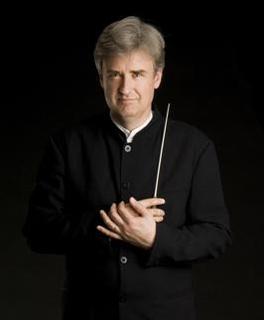|
Back
Dausgaard’s Momentum Houston
Jones Hall
05/01/2014 - and May 3, 4, 2014
Arnold Bax: Tintagel
Ludwig van Beethoven: Triple Concerto, Op. 56
Jean Sibelius: Symphony No. 5 in E-flat Major, Op. 82
Frank Huang (violin), Brinton Averil Smith (cello), Joyce Yang (piano)
Houston Symphony, Thomas Dausgaard (conductor)

T. Dausgaard (© Ulla-Carin Eckblom)
Thomas Dausgaard's annual visit to the Jones Hall stage is always welcome and refreshing. This year, he compiled an intriguing trio of works to present to the Houston audience. Opening with Arnold Bax's Tintagel, a tone poem whose musical language hovers between Elgar and Debussy, the immediate impression was one of urgency and boldness.
The fine performance of the Bax gave way to an agile take on Beethoven's Triple Concerto featuring the HSO's concertmaster, Frank Huang, and principal cellist, Brinton Averil Smith. Rising pianist Joyce Yang joined the two string players, and the trio could not have played with more energy and accuracy. The latter two movements of the piece are the most interesting. Smith etched the Largo's lyrical lines with beautiful tone, passing them along to his fellow soloists, who echoed the cellist's fine playing. The Rondo alla Polacca was taken at quite a clip, but the tossing about of vertiginous roulades among the soloists was a thrill to see and hear. At times, Dausgaard seemed to push the orchestra slightly ahead of the trio, but this added to the momentum of the piece.
Sibelius' magisterial Fifth Symphony is a personal favorite, and Dausgaard's interpretation was taut and rhythmically propulsive. The tempo for the opening of the first movement felt too quick, but after the miraculous transition to the scherzo, Dausgaard tiered the continuous push to the coda perfectly. The movement's ending thrilled with dominant brass and soaring string figures. Leading an impressive woodwind section in the second movement, principal oboist Jonathan Fischer wove himself into the fabric of the ensemble, then floated effortlessly on top during his plaintive solos. The finale's exaggerated tempo felt more appropriate than in the first movement. The double strokes in the strings' main figure were impeccably coordinated, while Dausgaard encouraged the double basses to exaggerate their ricochets as they underpinned the glorious "swan" theme, giving the passage a welcome layer of unexpected timbre. The metamorphosing brass lines that eventually coalesce into the famously disjunct closing cadence brought forth a glorious, dark and focused sostenuto from the entire orchestra. This rousing performance left one yearning for even more of Sibelius' captivating sound world.
Marcus Karl Maroney
|